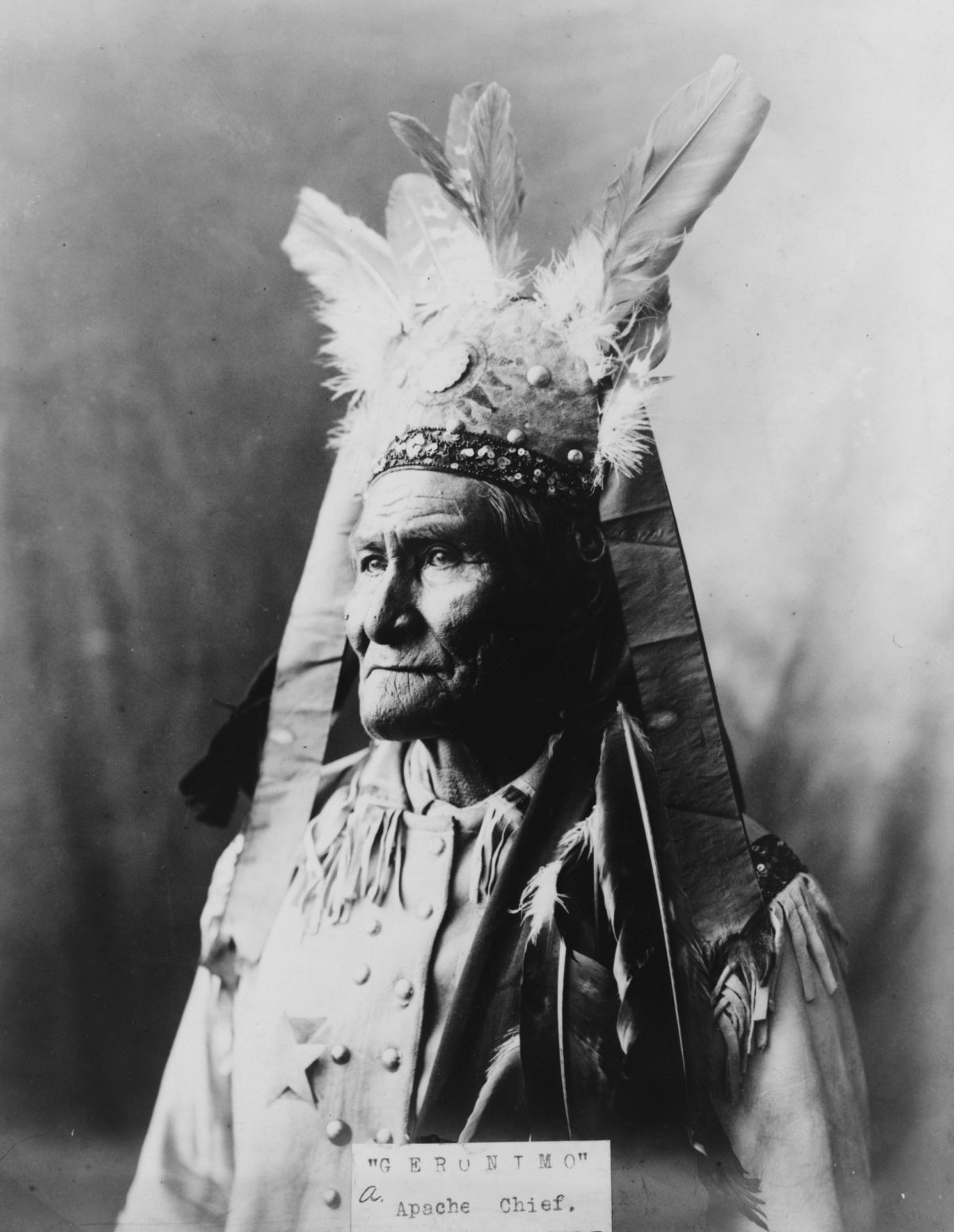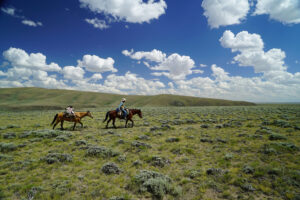On September 5, 1886, Brigadier General Nelson A. Miles sent a telegram to his superiors in Washington, D.C., announcing that the 16-month war with Geronimo and Naiche was finally over. An era had also ended. Twenty-five years of intermittent warfare between the Chiricahua Apaches and Americans had reached its ultimate and inevitable destiny. At the forefront of the resistance was Geronimo, a Chiricahua shaman who had a hand in virtually every major incident between his people and Americans during the previous quarter-century. He was not a chief in the traditional sense. His tribal authority prevailed over relatives and close friends. Yet most Chiricahuas recognized that he had almost supernatural powers: an unquestioned ability to predict enemy movements and the outcome of battles.
During his last flight from the reservation on May 17, 1885, he could convince only 143 followers (41 fighting men) to join him. More than half left only because they had panicked when Geronimo told them a lie, that his men had killed the agent. The balance of the tribe, some 385 individuals, had stayed on the reservation. Hoping to put a quick end to the war, 60 of the 80 Chiricahua men actually enlisted as scouts for the military. They were led by Chatto, a 40-year-old chief, who would perform yeoman’s service during the campaign of 1885. Without Apache scouts (which included Western Apaches), the military would have accomplished little.
Today, on the 120th anniversary of Geronimo’s September 3 surrender, Chatto and Geronimo have become the faces of the peace and war factions, the symbolic characters of the nation’s last significant Apache war. Once Geronimo formally capitulated at Skeleton Canyon in Arizona Territory, General Miles sent the hostiles to Florida, where they were kept under military control and classified as prisoners of war. Miles’ decision was just, for over the previous decade Geronimo had left reservations on four occasions (in 1876, 1878, 1881 and 1885), escaping to the Sierra Madre in Mexico.
Miles then made a recommendation, this one unjust. He asked his superiors to authorize the removal of the entire Chiricahua tribe to Florida. He did not value the contributions made by Chatto and the 60 Chiricahua scouts. And he purposely ignored the inconvenient fact that 385 Chiricahuas not only had lived peacefully on the reservation but had never provided aid or recruits to the hostiles. He argued that the reservation was a breeding ground for new leaders, implying that malcontents had joined Geronimo. His specious arguments convinced Secretary of War William Endicott and President Grover Cleveland to approve his egregious betrayal. Those who had helped Brig. Gen. George Crook and Miles to end the war suffered the same fate as those who had raided and killed citizens of the United States and Mexico. Miles sent them to Florida, where they, too, were classified as prisoners of war under control of the War Department. Incredibly, this designation continued for 27 years.
Though remembered today for their contempt for each other, Geronimo and Chatto had a similar history. Each spent his early years living with Mangas Coloradas, who was Chatto’s uncle. Each vividly remembered the military’s treachery toward Cochise and Mangas Coloradas in the early 1860s, which left the tribe suspicious of Americans and contributed mightily to the strife in the 1870s and 1880s. Each was captured at Ojo Caliente by Indian Agent John Clum, who shackled them before transferring them to San Carlos. Finally, in September 1881, fearing that American soldiers planned to arrest them, each jumped the reservation for Mexico. Chatto explained that talk of troops made [Geronimo] nervous [as] a wild animal.
For reasons not entirely clear, once in Mexico their friendship ended. Then tragedy struck Chatto. On the frigid morning of January 24, 1883, Tarahumara Indians from Chihuahua surprised a Chiricahua camp, slaying about 20 and capturing 33, including Chatto’s wife and two children. The loss devastated him, haunting him for the next 50 years. His heart was sick with grief. A few months later Chatto led a famous raid into Arizona and New Mexico territories that captured a young white, Charlie McComas. Soon after, Chatto organized a war party to strike Chihuahua. His objective was captives, whom he planned to trade for his family. While he was absent, however, Captain Emmet Crawford’s Western Apache scouts surprised Chatto’s base camp. Every chief accepted Crook’s offer to return to the San Carlos Reservation. The general took some 300 with him, leaving 200 to come in soon after. Chatto stayed behind, hoping to recover his family. Negotiations with Chihuahua, however, broke down, and he finally returned to San Carlos in February 1884. Chatto explained his delay to Captain Crawford: If you were in my position with your relatives in captivity, I think you would have done the same.
Chatto adapted quickly to reservation life, but the thought of his family consumed him. When he met General Crook in May 1884, Chatto asked him for help to free his people held in Mexico. Over the next year the general did all in his power, urging officials in Washington to write Mexican officials about the captives. To show his gratitude, Chatto enlisted as a scout on July 1, 1884. Lieutenant Britton Davis, the Chiricahuas’ agent near Fort Apache, appointed him sergeant. The two developed a strong friendship grounded in trust. Davis would later characterize Chatto as one of the finest men, Red or White, I have ever known.
Crook especially felt betrayed by Geronimo’s final uprising. He told Davis to tell the reservation Chiricahuas that he would have to suspend efforts to recover their captives until peaceful times are restored. Chatto took command of the reservation. He organized a war dance for the scouts and then left to pursue the hostiles. Chatto surprised one camp, capturing 15 women and children. Years later he recalled the arduous and dangerous time: I carried a double cartridge belt with 45 to 50 cartridges on each belt. My rifle was loaded and my finger on the trigger following fresh tracks of hostiles, not knowing when a bullet might go through my forehead. Chatto was friendly with the two Chiricahua guides, Martine and Kayitah, who helped the Army locate the elusive leader’s camp in Mexico. In fact, Chatto had recommended Martine, who took Lieutenant Charles Gatewood to meet with Geronimo on August 25.
Geronimo and Chatto remain controversial among their own people. To some, Geronimo was the last of the Chiricahua patriots, fighting to preserve his way of life. To others, however, he had outlived his time. Those who remained on the reservation thought Chatto was on the right side. Yet some followers of Geronimo, unable to appreciate the reasons for Chatto’s decision, thought him a traitor.
Historians are just beginning to understand why Chatto served so eagerly as a scout for Crook. Personal animosity toward Geronimo was perhaps one reason, but another was gratitude to Crook for trying to recover his family. Unfortunately, without Mexico’s cooperation even the general could not arrange a happy outcome.
Geronimo has achieved a notoriety accorded to only a very few American Indians. One could argue that his fame stems from the fact that his surrender in 1886 effectively marked the end of Indian resistance in North America.
This once obscure Apache warrior, not even recognized by most Americans until he was in his mid-50s, has today become a legend of mythical proportions, and his fame steadily continues to grow.
This article was written by Edwin R. Sweeney and originally published in the October 2006 issue of Wild West Magazine. For more great articles, subscribe to Wild West magazine today!





